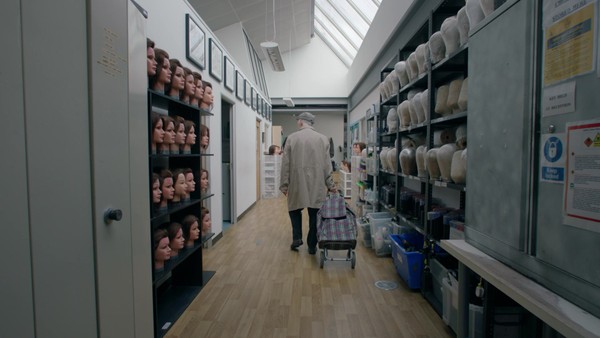Pharma > A: Communications to Healthcare Professionals
DIFFERENT ANGLE
VCCP HEALTH, London / MUNDIPHARMA / 2015
Overview
Credits
OVERVIEW
Audience
The audience for this campaign was solely HCPs treating cancers relevant to Levact. These clinicians are most receptive to new information at conferences, when reading journals and in one to one meetings with representatives. These three elements therefore were the main focus of our campaign.
BriefWithProjectedOutcomes
The materials were developed for and placed solely in Europe. As Levact is prescribed medication they compiled with European law and therefore can only be advertised as an ethical pharmaceutical product to Healthcare professionals.
CampaignDescription
Levact had a narrow window of opportunity in the European markets for which Mundipharma had a marketing license. While waiting for a license for a new indication that represented 5 times the previous commercial opportunity it needed to shake off old misconceptions and pave the way for it’s new use in the blood cancer armamentarium. Our challenge was to get Drs to look at this drug again and ask questions that would lead to more fruitful conversations. Our strategy was simple, hook them with an intriguing, beautifully executed, promotional campaign that for the first time in a long time for Levact left oncologists and haematologists wanting to know more about a very old chemotherapy.
ClientBriefOrObjective
The campaign was the hook to spark interest in Levact, precipitating haematologists across the European region to ask questions about new data and request an audience with marketing and medical representatives from the company. This being the case, the promotional requirements of the campaign were deliberately restricted, leaving the vast majority of the company’s efforts to be conducted as part of scientific meetings, education and medical liaison activities.
Execution
To succeed we needed to elevate the impression and salience of Levact beyond the chemotherapies they were already using day to day. The central image was created from 3500 objects bought from local cancer charities. Using these we created an image that could only be appreciated from a different angle. Like Levact, bringing order and humanity to the chaos caused by cancer and its treatments. This intriguing creative idea was designed solely to make clinicians stop, think and ask questions. To this end we avoided technical specifics that would close down the conversation to granular details and technical aspects of the drug.
Outcome
While the campaign has shown to be successful within the terms of it’s own Key Performance Indicators Levact is still awaiting approval of the critical first line indication. It is therefore too early to judge the true financial benefit of the changes in physician interest and attitude towards Levact.
Strategy
Interviews with critical stakeholders including haematologists, oncologists and oncology nurses established the strategic imperatives. The central decision maker, the haematologist, saw themselves as ‘bleeding-edge’ scientists first, problem solvers second and physicians third. We identified that our task was to focus communications on changing perceptions of this ‘outdated’ drug as something that could offer ‘no more surprises’. Insight gained in these interviews, coupled with extensive competitive research, found that an intriguing and creative solution was required to garner interest and cut through – and not disappear into the classical “display the danger” or trite patient benefit communications of the category.
Advertising helped compensate the small sales teams. The second pillar, face to face selling, allowed discussion of broad scientific questions that could not be covered promotionally. The final element seamlessly segued promotional and scientific discussions – using the campaign as a perfect vehicle to starting thinking about Levact from a different angle.
Synopsis
Levact (bendamustine) is a bit of an oddity. It was developed 50 years ago in Eastern Europe from mustard gas as an alternative to the cripplingly expensive chemotherapies of the West. Quietly it trundled on garnering little interest from the major markets despite good data. Finally, in 2009 a large investigator study showed that used with targeted therapy MabThera patients could achieve remarkable results while reducing side effect burden. While the brand team waited for approval of this additional indication, we needed to get all oncologists to look again at this phenomenal drug.
More Entries from Pharma, Vaccines & Biotech in Pharma
24 items
More Entries from VCCP HEALTH
24 items








